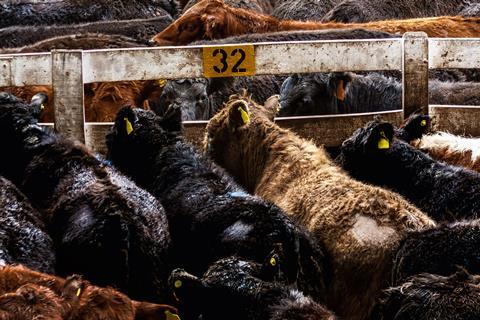
At the centre of much of the criticism levelled against cultured meat in 2021 was a dense 100-page report – or techno-economic analysis (TEA) – finished nearly a year prior.
Funded by Open Philanthropy (which also approved a $4m two-year grant to the Good Food Institute in 2019), it was the result of two years of investigations and calculations by its author, chemical engineer and principal at DWH Process Consulting David Humbird.
Though Humbird is less equivocal in the text itself, in a series of interviews with The Counter ahead of the bombshell analysis in September last year, he reportedly said “it was hard to find an angle that wasn’t a ludicrous dead end” when it came to scaling up cultured meat products. But why?
Put simply, it would cost too much. Working off the assumption the industry would grow to produce 100 kilotons per year (for context, the Argentinian cattle industry produces around 3,000kt of beef annually), he argued a facility producing about 6.8kt would cost from $17-$23 per pound of meat, given the current equipment and production processes used by cultured meat companies. Unworkable in a supply chain where a burger can cost as little as $1.
There are myriad technical reasons he gives for this cost calculation. One is the cost of clean rooms, for example. Humbird assumes production would need to go above and beyond food-grade sterilisation. Instead it would require pharma-grade ‘clean rooms’ to eliminate the chance of contamination. This would require an enclosed space, into which purified oxygen is piped and replaced at a rate of 10 to 25 times per hour. The problem is such a room could cost up to $40m-$50m (to produce roughly 15 million pounds of meat). That puts a huge dent in the economies of scale.
Another barrier is the price of synthetic blood. Cultured meat has (thankfully) moved away from deploying pints of foetal bovine serum as the medium in which cultured cells ‘grow’ and develop. Instead, companies in this space have created serum-free media, though the precise constituents are a tightly held trade secret. What we do know is it will be made up of a mix of both micro and macronutrients – and the relative cost and availability of these is another source of controversy. Current global production of essential amino acid L-Tyrosine, for instance, would need to increase sixfold, says Humbird.
As you’d expect, GFI – and cultured meat companies themselves – contest the calculations in Humbird’s analysis. In particular, GFI has pointed to the fact Humbird simply didn’t have access to the type of data CE Delft did when it compiled a second TEA commissioned by GFI, published in March 2021. It found that – far from being wholly out of reach – cultured meat could be cost-effective by 2030.
Their argument is that: “The Humbird analysis, relying only on publicly available data, necessarily draws insights from the existing literature on parallel fields such as biopharma and cell therapy. The CE Delft analysis, on the other hand, is the only publicly available techno-economic analysis we are aware of that uses actual data submitted by companies producing cultivated meat and its inputs, shared under NDA directly with the CE Delft team.”
Topics
Is cultured meat ‘pure science’ or a billion-dollar con?

Almost a decade since the unveiling of the first lab-grown burger, no business has been able to make it commercially viable. But that’s not stopped the money rolling in
- 1
- 2
 Currently
reading
Currently
reading
How 2021’s cultured meat controversy exploded
























No comments yet